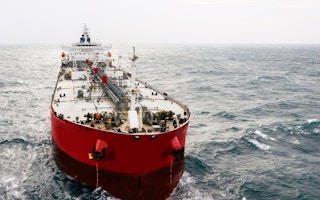The shipping industry is sailing into choppy waters.
The International Maritime Organization (IMO), the United Nations regulatory agency in charge of the sector, announced a two-pronged approach towards creating a cleaner and more sustainable shipping industry at a meeting last month.
Firstly, vessels will now have to adhere to mandatory energy-efficient measures such as establishing energy management and voyage plans, cleaning the underwater parts of the ship and introducing technical measures such as waste heat recovery systems to reduce greenhouse gas emissions.
In what has been dubbed the “Paris Agreement” of the sector, the IMO declared an aim to halve the industry’s greenhouse gas emissions by 2020 and introduce sulphur caps on vessels, which means vessels will now have to use cleaner, but more expensive fuels. The ultimate goal is the complete eradication of greenhouse gas emissions.
Secondly, the organisation is encouraging capacity-building projects that would help ship owners and shipping companies meet the targets set by IMO. This includes efficiency management plans such as improved voyage planning, more efficient ways of cleaning the underwater parts of vessels, and research and development.
Oscar Wezenbeek, director for marine & protective coatings at paints & coatings firm AkzoNobel who works extensively with the sector, says the new regulations will encourage shipping companies to invest in sustainable practices more actively.
“The trend of scrapping vessels that do not comply with the new measures will continue for the next five to 10 years,” he says in an interview with Eco-Business, explaining that it is more cost-effective for shipowners to build new ships with new technologies that meet all the requirements. IMO has established guidelines for the amount of fuel each vessel is permitted to use, which will be progressively reduced. This move is meant to encourage innovation and bring about more fuel-efficient and eco-friendly vessels, but for now older vessels that are less-fuel efficient are likely to be retired.
“Other more immediate trends would be shipping companies choosing to use liquefied natural gas (LNG), engaging in slow-steaming (reducing the speed of a vessel to save fuel and reduce emissions) and experimenting with different types of engines,” Wezenbeek remarks.
Other ways to reduce emissions from the industry include short-term incremental measures such as improving hull and propeller designs, which could reduce emissions by up to 5 per cent. Ship owners can consider harnessing wind energy to propel vessels and installing energy storage facilities.
Shipping matters
Shipping accounts for slightly above 2 per cent of the world’s emissions. But with global trade on the rise and shipping remaining the most efficient method of transporting goods, the measures announced by the IMO are incredibly important to clean up the industry, says Wezenbeek.
He adds that another way that the shipping industry can reduce emissions is by choosing the right coating for their vessels.
For instance, AkzoNobel’s Intersleek range of biocide-free marine coatings prevents biofouling, which is when marine organisms grow on the ship’s hull and increases drag. By avoiding biofouling and reducing drag, vessels use less fuel and produce fewer emissions.
The coating has been used in the floating, plastic-catching systems of The Ocean Cleanup, an ambitious project to completely remove plastic from oceans starting with the Great Pacific Garbage Patch.
A more advanced fouling-prevention technology is currently in the works. Together with electronics company Royal Philips, AkzoNobel is looking to use ultraviolet light emitting diodes (UV-LED) to prevent all types of fouling, including slime.
AkzoNobel has also been running a carbon credit system for customers of its Intersleek products since 2014. For every verified tonne of CO2 that a shipping company removes from the atmosphere or avoids producing, it is awarded a carbon credit that can be traded on global carbon markets. To date, AkzoNobel has awarded $1.2 million in carbon credits to companies that are cleaning up their act.
Beyond coatings, Wezenbeek points to digitisation and technology as a trend that will steer the shipping industry towards a more eco-friendly path. “Vessels are now being equipped with sensors which generate a lot of data for us to make more efficient and sustainable decisions, he says. The firm’s digital service, called Intertrac Vision, uses these data points, artificial intelligence and drone technology to show customers accurate predictions of potential fuel and CO2 savings offered by our coatings,” he explains.
The IMO is encouraging the use of technology in capacity-building projects and in improving other aspects of the business model. For instance, Intertrac Vision allow customers to predicts how often they have to recoat their vessels based on their travel routes, and vessel and ocean data. This helps to reduce waste and save costs.
Wezenbeek adds that technology can help to alleviate some dangers of shipyard operations when it comes to coating application and inspection, as some tasks become digitised.
There remains a strong drive for the company to spread awareness on the importance of sustainable practices and product solutions. For instance, AkzoNobel teamed up with Volvo Ocean Race that aims to create opportunities for discussions between various organisations on reducing marine litter. Wezenbeek thinks clean-up actions must be complemented with awareness-raising because “we must address the root cause of why plastics are in our oceans”.
Sustainability, says Wezenbeek, cannot be an afterthought and does make economic sense.
“[IMO’s] announcements show that industry is starting to take responsibility. This is a fantastic step in the right direction but it is important for us to go above and beyond,” he says.











